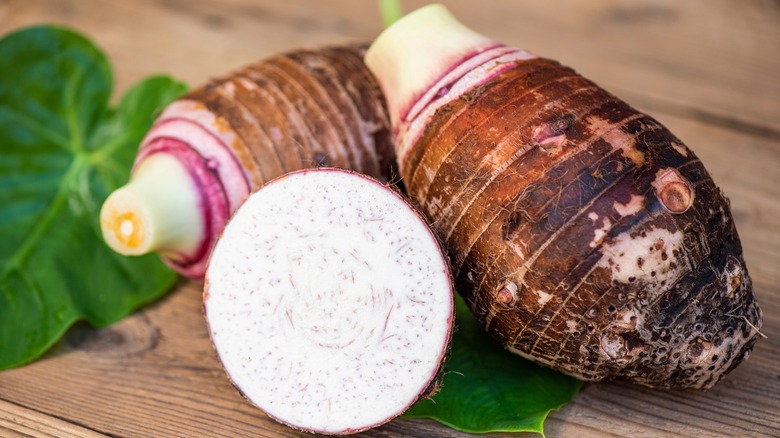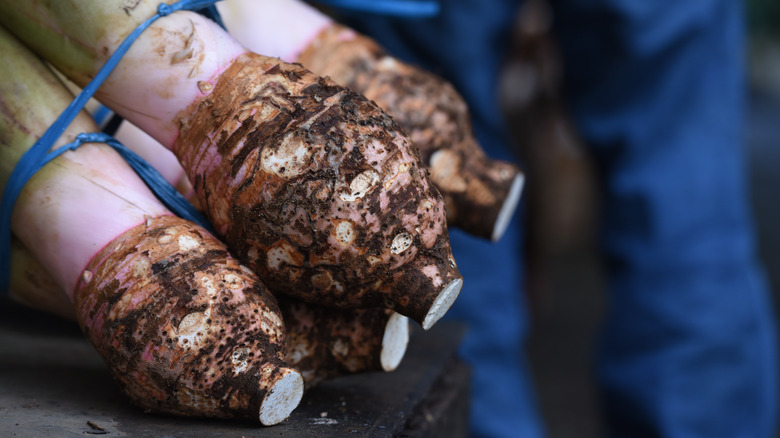Taro Root Is More Versatile Than You Might Expect
Taro is an iconic ingredient in Polynesian cuisine, particularly in Hawaii where it forms the basis of staple dishes like poi and pa'i'ai. It is somewhat less renowned outside of the Pacific Islands today, but taro was once the most widely cultivated food crop in the world (via Wiley Online Library). It was grown in the tropical climates of Africa, Asia, Oceania, and even to an extent in the temperate region surrounding the Mediterranean Sea.
It is likely that taro root was first farmed many centuries ago in Asia, per Science Direct. Although no group of people made more of it than the Kanaka Maoli, the native people of Hawaii for whom it was a vital staple and had close ties to their religion. However, it seems that taro is sadly underutilized today. Which is surprising, since this meaty and custard-like vegetable can be used in so many delicious recipes.
There are many varieties of taro
The taro root — technically not a root at all but an underground stalk known as a corm — is somewhat similar to a potato, with dark brown skin and pale, starchy flesh, per Britannica. Like potato, taro is a highly versatile vegetable, although in contrast to potato, it has a slightly nutty flavor and a higher concentration of potassium and fiber (via HowStuffWorks).
The most well-known taro dish may be poi, a Hawaiian pudding made from the fermented root, but it can also be enjoyed in bread and pastries. In Africa, taro is commonly fried or roasted to serve with soup, and in India, it's enjoyed with spicy gravy. In our Guide to Maui, Bobby Pahia, who farms taro (known as 'kalo' in Hawaiian), explained that there are approximately 250 varieties, though not all are grown today, offering a vast array of culinary options. Taro may not be the staple it once was, but it remains clear how it earned that status.

